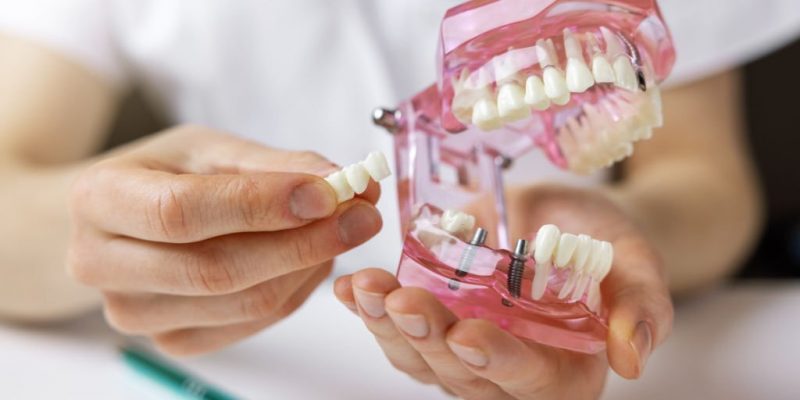Your smile is the key to your confidence! You feel much better about yourself when you are pleased with your grin. For those of us who lack teeth, this is a difficult situation. It can be awkward to smile. Your ability to eat or speak could be hampered if you have a missing tooth. Thankfully, a dental bridge can eliminate these gaps when utilized in restorative dentistry.
Dental Ailments Are For Everybody!
Dentists in Summerville, SC, offer various corrective dental care options because they understand the benefits of a complete smile. One of the many operations we offer, dental bridges, are used to fill gaps caused by missing teeth.
Crowns and teeth bridges may last as long as possible if you understand how to care for them properly. According to our dentist, every tooth should have regular flossing surrounding it, whether it is a natural tooth holding the bridge or a brand-new dental implant.
So continue reading as we explore the different aspects of flossing and cleaning a dental bridge in the following sections of this blog. Let’s get started.
How Do Dental Bridges Work?
A dental bridge fills the space created by a broken tooth or teeth and is a durable appliance. It consists of many pieces attached to fill the space created by your lost tooth or teeth.
Dental bridges in Summerville SC, can be used in place of partial dentures. A bridge can make your teeth look better and help you speak and chew more clearly.
Dental bridges can be made from various materials, including porcelain, gold, and alloys. Since porcelain can be customized to match the color of your tooth structure, it is widely used to substitute front teeth.
Different Types Of Dental Bridges
Several materials can be utilized to make dental bridges. Here’s a list of some of the most commonly used bridges:
Conventional Dental Bridges
These dental bridges in Summerville, SC, are the most often utilized ones. These use dental crowns on all holes to hold the pontics (artificial teeth) in place. Dental crowns are also referred to as abutments. These have adhered with glue to the teeth close to the gap.
The only drawback of conventional bridges is that your dentist in Summerville SC, will have to shave enamel from the adjoining teeth to make space for the crowns to be attached on top.
Bridges with Cantilevers
Except for the tooth crown being held by an anchor on just one end rather than both, they are similar to conventional ones.
As a result, this type can still be used even if only one natural tooth is close to the space on one side.
Maryland Bridges
These consist of a metal or porcelain framework holding the pontic. The framework is fastened to the teeth next to the space. The only problem with Maryland bridges is that their strength depends on how long the adhesive holding them in place will last.
Implant-Supported Bridges
When there are many missing teeth, they can be installed. These bridges are held in place by dental implants rather than crowns or frames. Usually, an implant is placed for every missing tooth. These bridges exude a sense of coziness and security.
Why Should You Floss?
It’s been said that you should only floss the tooth you would like to keep because brushing only cleans roughly 60% of your enamel surface without flossing. In addition, cleaning with floss allows you to access areas that a toothbrush can’t.
Precisely, the spaces among teeth wherever they touch one another and immediately beneath the gumline in those regions. Due to how rarely most people floss, these areas are more susceptible to cavities and gum disease.
When Should You Floss?
For best results, floss once each day to remove dental plaque. Without this, the plaque will begin to thicken into calculus, which is difficult to clean with a brush or flossing. Also, if your gums bleed, you likely should be flossing more frequently when flossing.
How To Floss Around A Dental Bridge?
Due to a location beneath your restorations that you cannot access from the top of your tooth, flossing dental bridges might be a little challenging.
In this situation, you should use flossing tools to pass the string beneath your bridge and then brush it against each tooth’s side. For cleaning the area beneath your bridge and gum layers, tufted “super floss” is also beneficial.
The Bottom Line
Dental bridges can give your smile a faultless, stunning, natural appearance, but they can be challenging to maintain. Make an appointment with the dentist if, like many people, you find it difficult to floss.
They can teach you the skill of maintaining your bridge because they are specialists in restorative dentistry and crowns, enabling you to floss comfortably and maintain the healthiest possible teeth.
Floss Dental Bridge The Right Way!
When new to dental bridges, you must ensure you’re used to cleaning and maintaining your dental ailment. However, if you aren’t, now could be an excellent time to learn the nuances of dental bridges with our Cane Bay Family Dentistry professionals. Visit us today or call us at (843) 352-4454 to know more.

